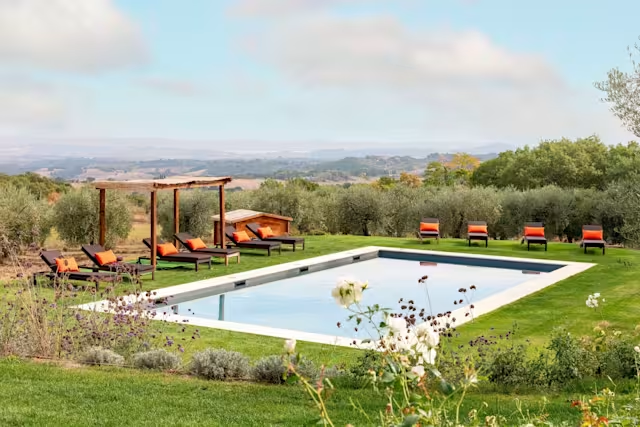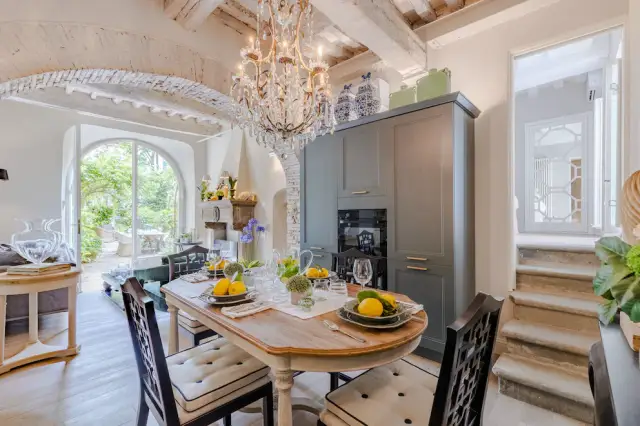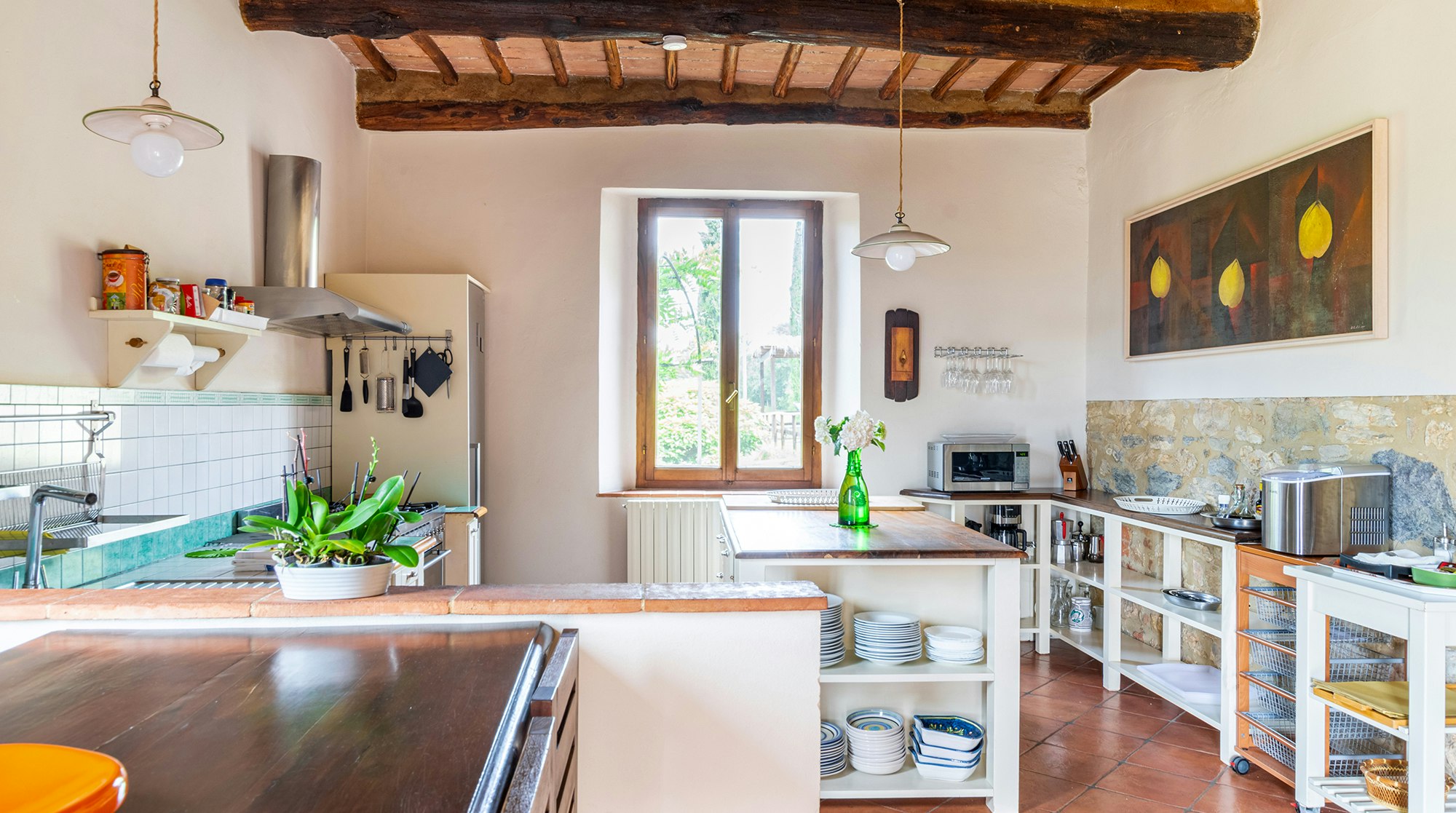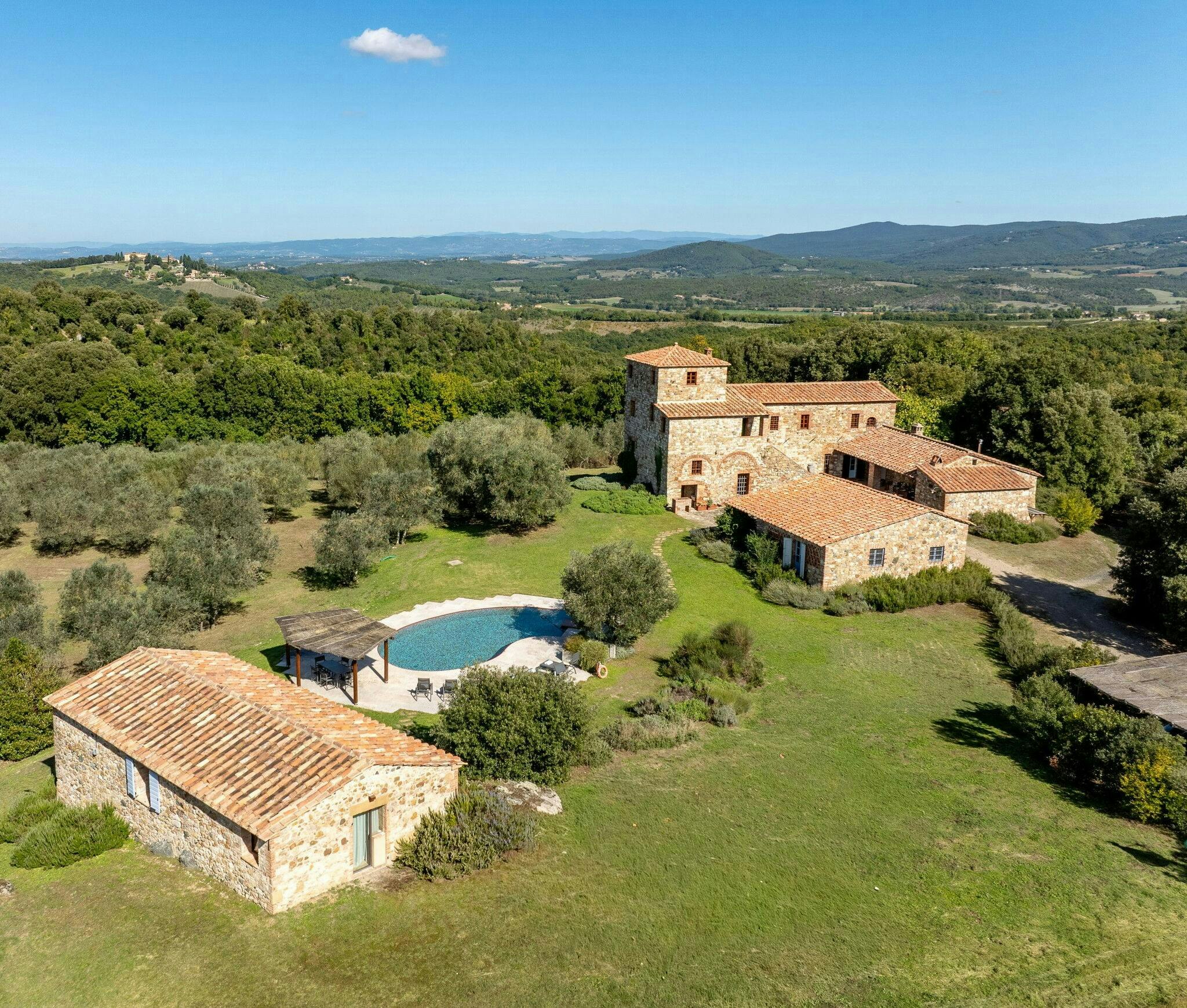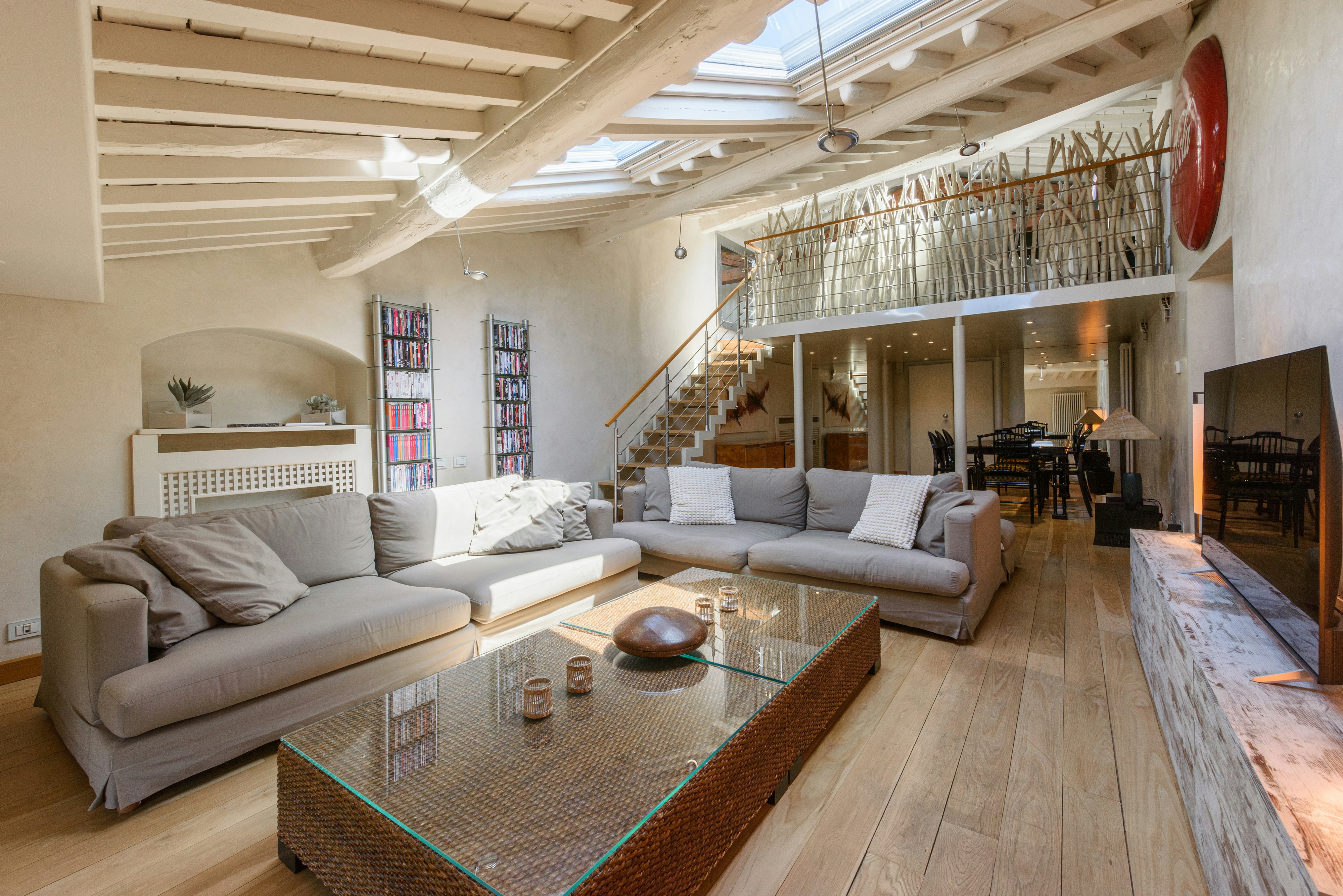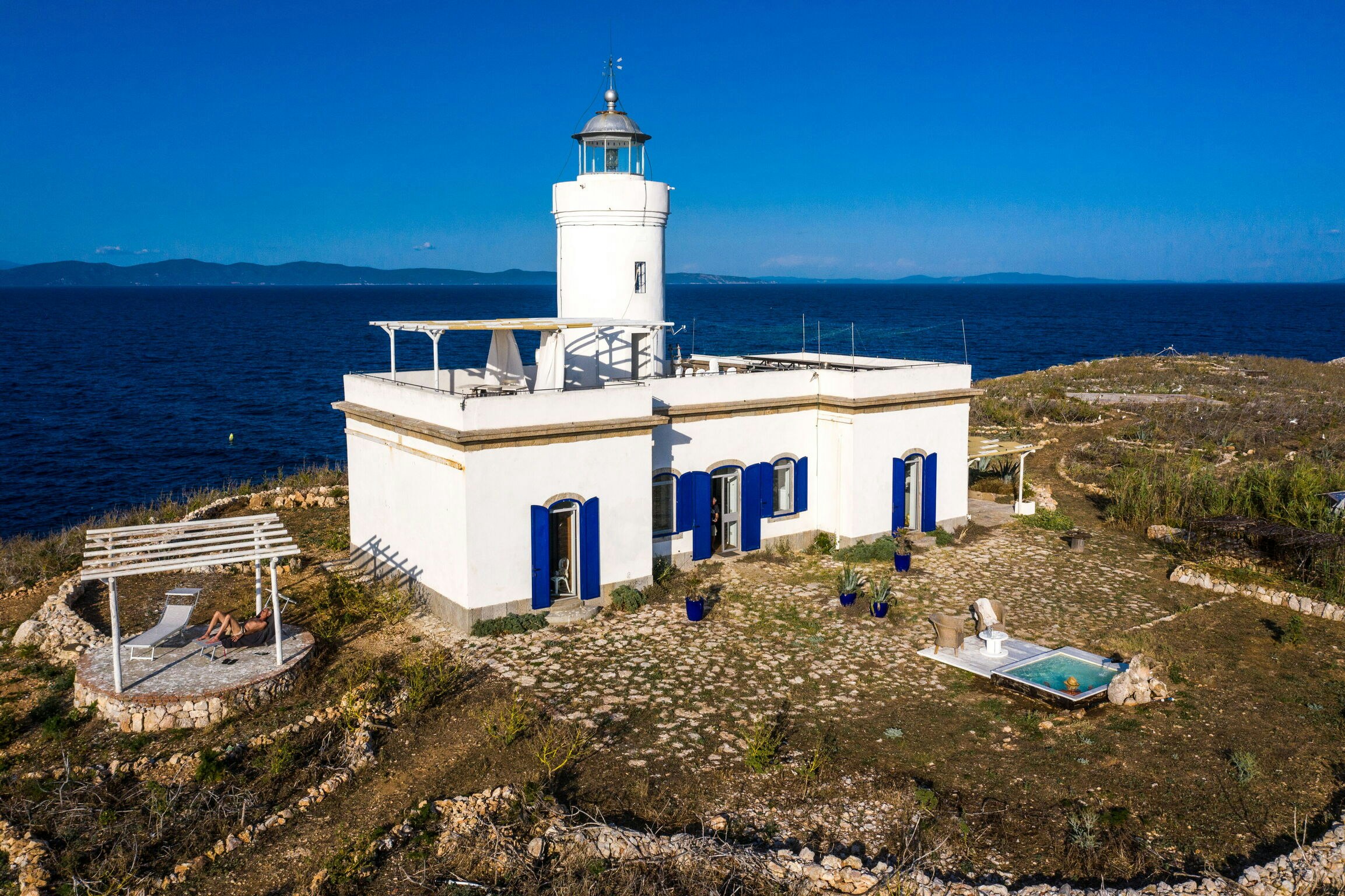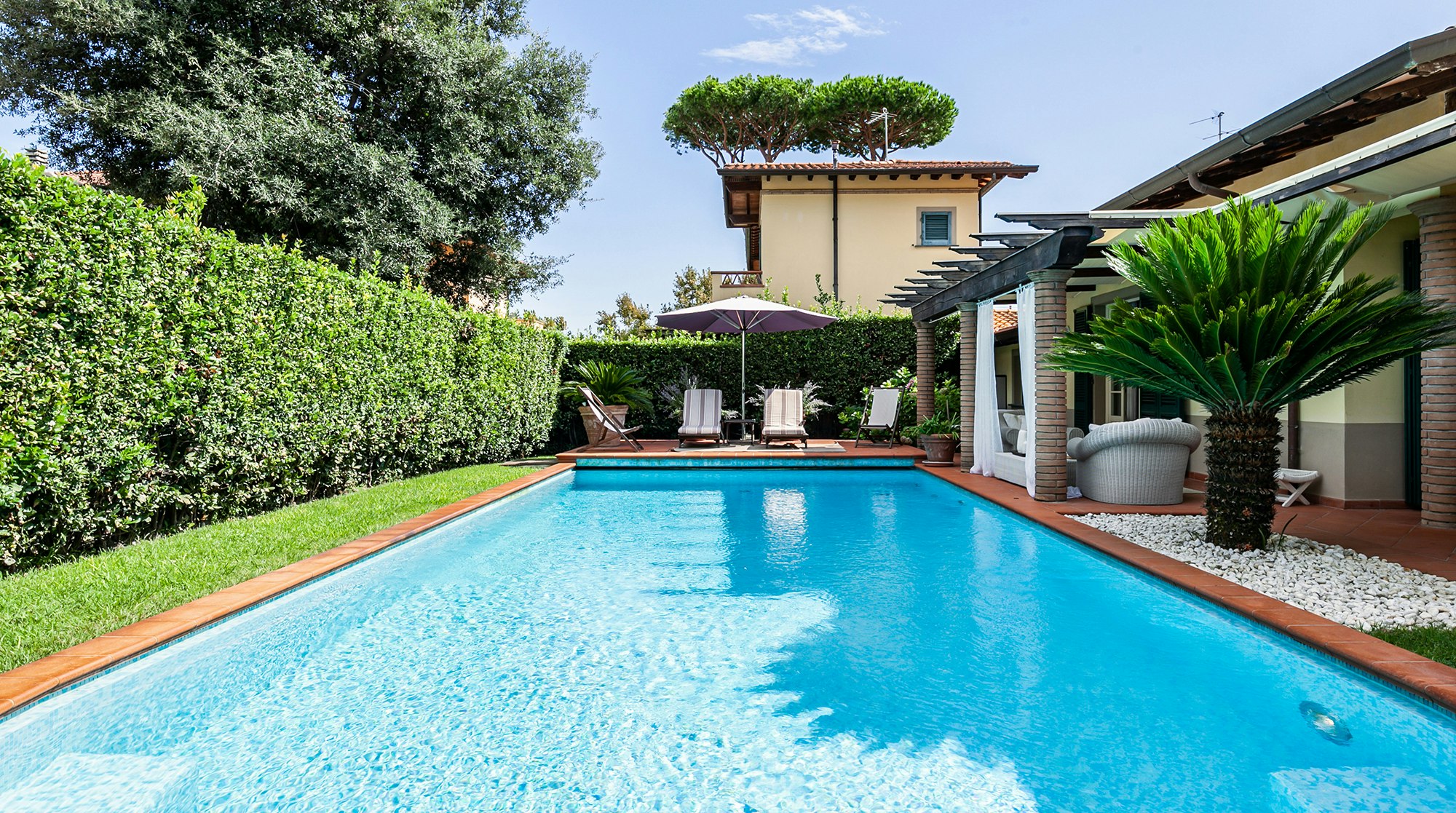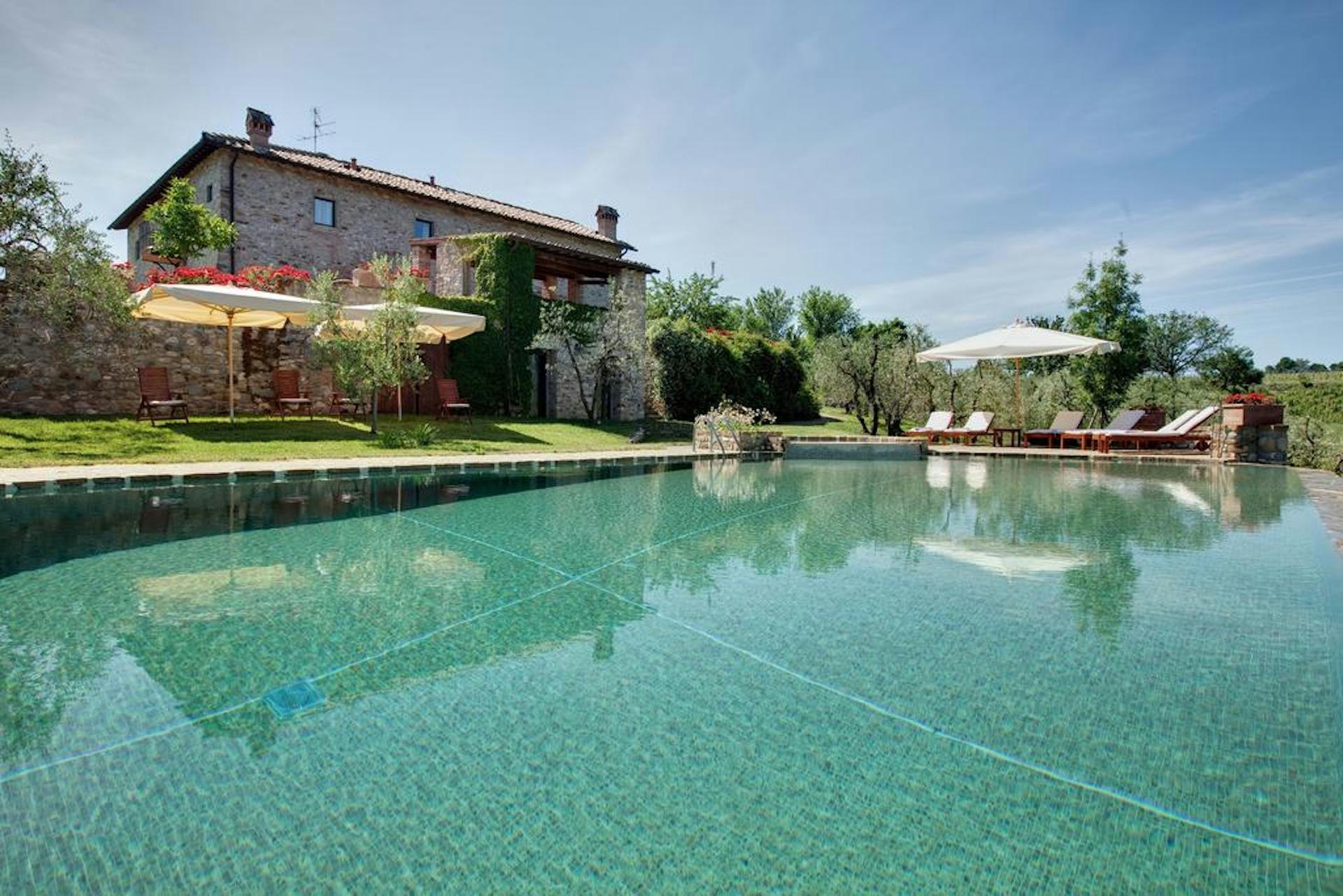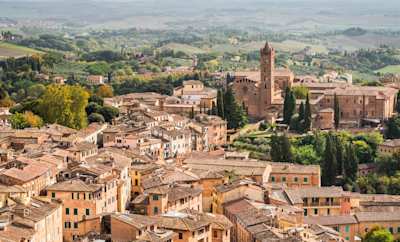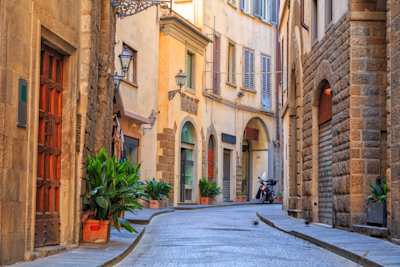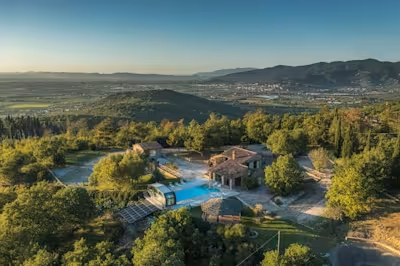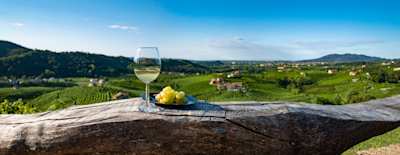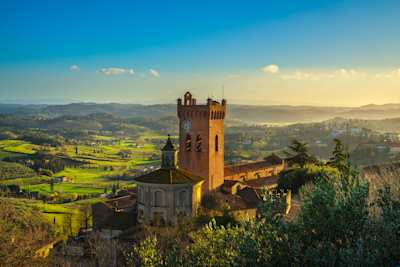A Travel Guide To Tuscany: All You Need To Know
Whether you’re looking for art, history, nature or just some good food and wine, Tuscany has it all
~
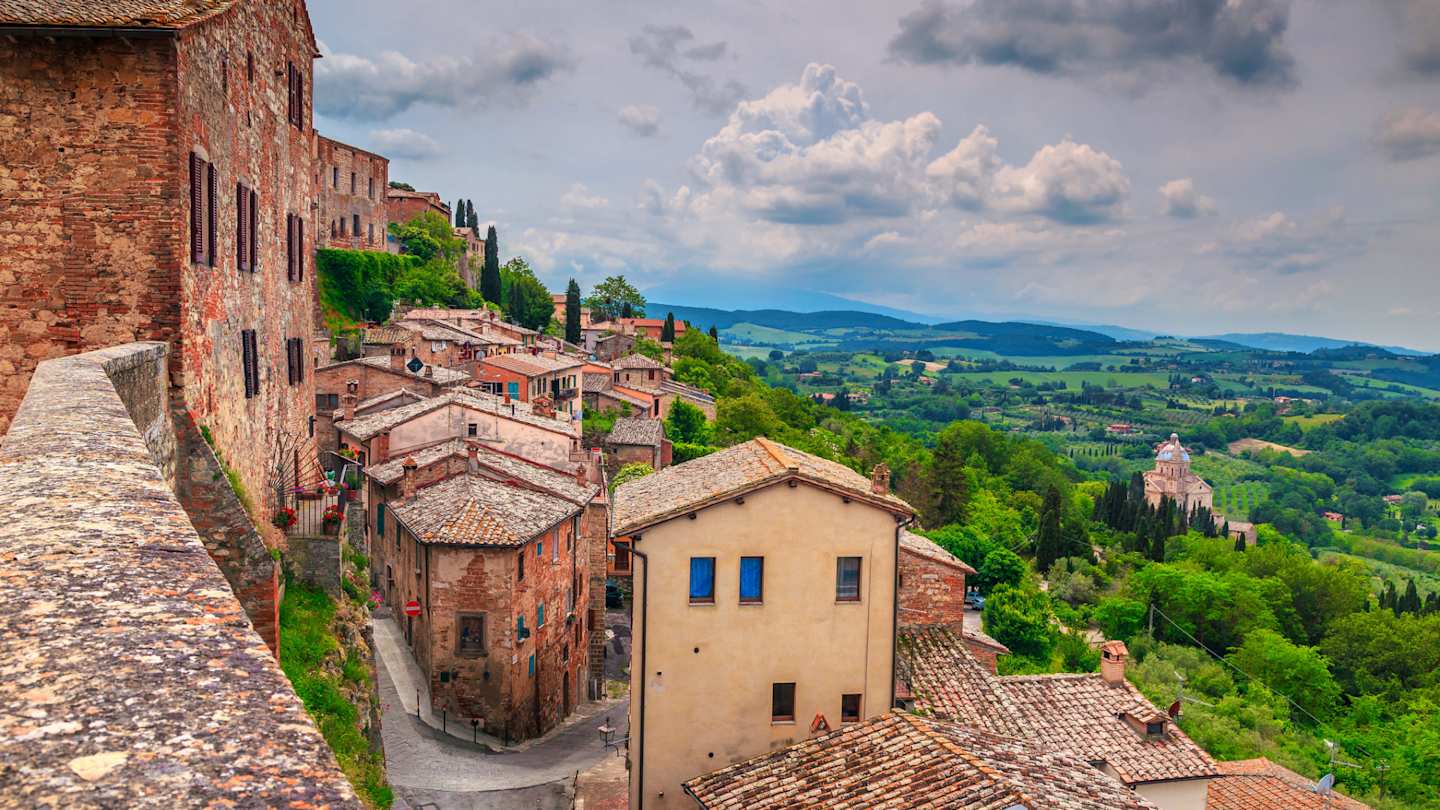
Travelling to Tuscany? We're green with envy. Italy's largest region is also one of its most visited, and with such spectacular surroundings, it's easy to see why. Its vast landscapes remain unchanged from centuries ago, with medieval hilltop villages shrouded in mist and cypresses abundant in the verdant valleys below. In our travel guide to Tuscany, the experts at Plum Guide have included all the essential information about travelling around the region. Ready for a taste of la dolce vita? Read on for more.
General info about Tuscany
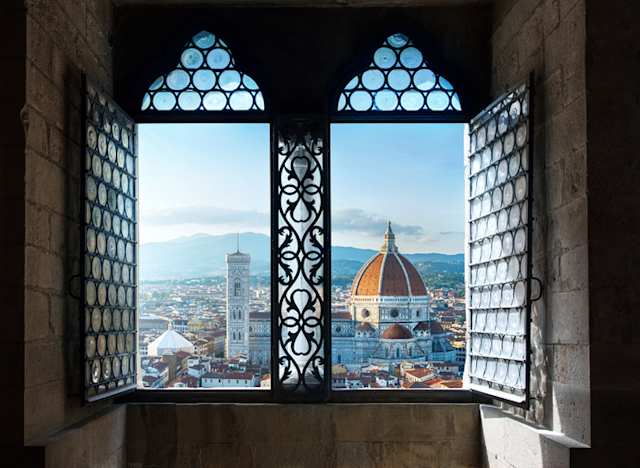
View from the old window on Florence Duomo Basilica di Santa Maria del Fiore. Florence, Italy
Tuscany is named after its pre-Roman inhabitants, the Etruscans. After the fall of the Roman empire, the region became known as Tuscany (Toscana in Italian) and had a succession of rulers. By the Middle Ages, Pisa, Siena, Arezzo, Pistoia, Lucca and Florence had become wealthy because of textile manufacture, trade, banking and agriculture, but there were also many wars between them to gain territory and power (surprise, surprise). Florence overshadowed all other cities, and in the 15th century, it saw the Medici family come into power. This was when the arts and literature flourished, marking the birth of the Renaissance era.
Best time to visit Tuscany

A view over lush green fields and distant hills at sunset, Tuscany, Italy
Although alive with sunflowers and fruit trees, Tuscany's summer months bring heavy crowds and high temperatures. If you want to avoid these, we recommend visiting between April and May or late September and October. This is when the landscape is at its most vibrant and the weather is pleasant, with temperatures around 17°C-23°C in spring and 20°C-26°C in autumn. During autumn, harvest is in full swing, and the rolling hills turn into a vibrant palette of reds and golds.
How to get to Tuscany
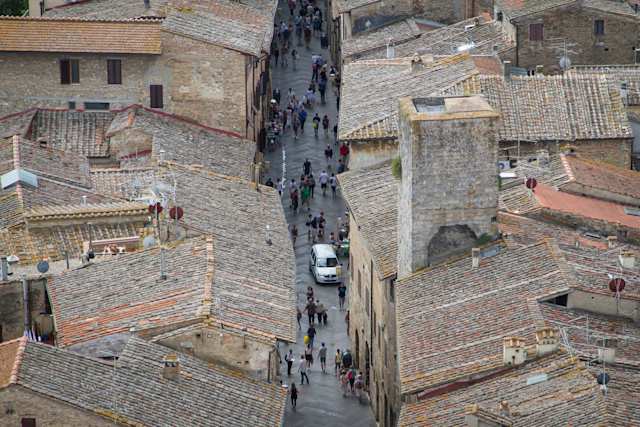
San Gimignano street in Tuscany, Italy
Tuscany is well connected to other areas of Italy and Europe. The two major international airports serving Tuscany are Pisa and Florence, with regular direct flights from Europe. Flights from further afield, like North America, the Middle East and Europe, mostly arrive in Rome. Tuscany is also easily reachable by train, and timetables and tickets can be accessed online with Trenitalia, Italy's national railway network.
Top activities and attractions
Beaches
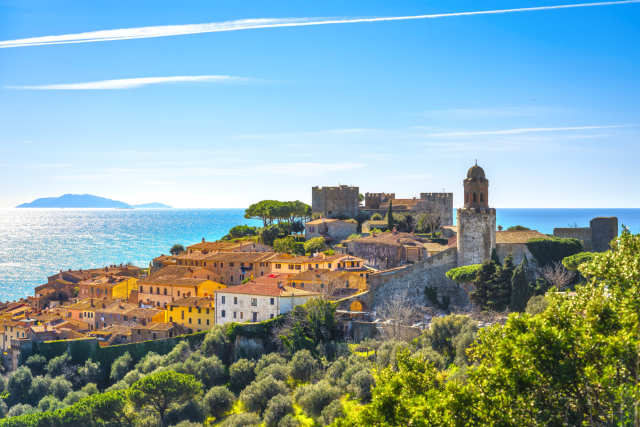
A view of Castiglione della Pescaia in the distance by the sea in summer, Tuscany, Italy
With such dream-like interiors, it's easy to forget that Tuscany is home to around 230 kilometres of coastline. From vast stretches of sand, pretty pebbled beaches and secluded bays, there's plenty to choose from for a relaxing day by the sea. Cala del Gesso is a remote beach, but the effort of getting there is worth it for the crystalline waters and views. However, if you're seeking somewhere with more amenities, Marina di Pietrasanta and Rochette beach are popular options which have everything you need.
Island hopping

Elba island, Portoferraio aerial view of lighthouse and fort, Tuscany Italy
While you're down on the coast, why not take a boat trip to discover the Tuscan Archipelago? It's made up of seven gorgeous islands that are home to some of Italy's most well-preserved flora and fauna. The crystal-clear waters surrounding them are protected by the Parco Nazionale Arcipelago Toscano, so it goes without saying that snorkelling and scuba diving is a must while you're here.
Art & architecture

Piazza Grande square in Arezzo, Tuscany
Tuscany is a treasure chest of art. Unsurprisingly, Florence is the best place to get your fix as the city is the cradle of the Renaissance. Marvel at notable pieces like The Birth of Venus and David of Michelangelo, and gaze up at the breathtaking buildings everywhere you look. Drive one hour to the nearby city of Arezzo (Tuscany's wealthiest city thanks to its history in goldsmithery), and you'll find equally extravagant frescoes and Renaissance art in the Basilica San Francesco.
Vineyards & wineries
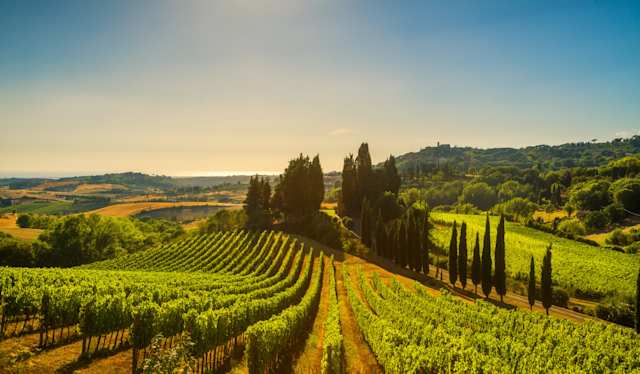
Casale Marittimo village, vineyards and countryside landscape in Tuscany
Tuscany is famous for its internationally popular wines like Chianti, Brunello di Montalcino and Vino Nobile di Montepulciano. There are around 100 wineries in Tuscany, so oenophiles won't have to worry about going thirsty. Wine-tasting experiences are a must, and you'll find most of the wineries in the main wine-producing areas of Chianti, Southern Tuscany and the coastal zone. Some of the most noteworthy institutions include Azienda Agricola Malenchini, Azienda Agricola Villanoviana and the 13th-century Camigliano Castle.
Countryside
Tuscany's hinterlands are its main appeal, and the best way to see it is to drive through the countryside. When in Italy, you may as well do it in style and hop onto a red Vespa or Fiat 500 (or go big with a Ferrari). Ride sorted and drive to the Val d'Orcia, an idyllic landscape of gently rolling hills, olive groves, fields of grains and rows of cypress trees. This valley is the Tuscany you see on postcards, peppered with hill towns like the UNESCO World Heritage Pienza and magical castles like the 11th-century Castello di Brolio.
Hidden gems
We couldn't possibly do a travel guide to Tuscany without including a few hidden gems. It may be a popular region, but that’s not to say you can't find places off the beaten track. One of our favourites is the Saturnia Hot Springs, about 2.5 hour drive from Florence. These picturesque aquamarine-coloured pools cascading down the hillside are an excellent spot to relax. Elsewhere, the village of Lari is also worth a visit. Dating back as far as the 8th century, you can still catch glimpses of Etruscan architecture here. It’s a great spot for foodies, too, with family-run butchers specialising in hams, sausages and prosciutto, as well as a small pasta factory and cheese cave. If art is more your forte, head to Lajatico, where you'llIt's find pop-up galleries, street art and Andrea Bocelli's childhood home.
Best areas to visit and stay in
Florence
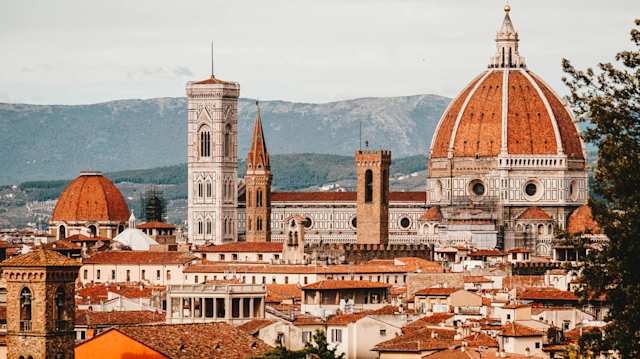
Skyline view over Florence, with rooftops and the Duomo, Italy
No travel guide to Tuscany would be complete without visiting its capital city, Florence. There aren't enough adjectives to describe this city, an overwhelmingly beautiful place that'll seduce you with its grand palaces, churches and galleries. Art and architecture like the Uffizi, Duomo and Ponte Vecchio bridge can be found around every corner, and there is plenty of opportunity for shopping with designer brands (homegrown designers like Guccio Gucci and Salvatore Ferragamo have had boutiques here since the 1920s) and artisan goldsmiths and shoemakers.
San Gimignano

San Gimignano, Tuscany, Italy
Famed for its majestic 12th-century towers, San Gimignano is one of Tuscany's most visited places. Only 14 of the 72 towers remain, and (depending on how much of a thrill-seeker you are) you can test how many you can climb or simply admire them from safe ground. Whatever you decide, treat yourself with a scoop at Gelateria Dondoli, one of the most acclaimed gelato shops in Italy. End your tour with a visit to the Archaeology Museum, the Civic Museum and the Torture Museum.
Siena
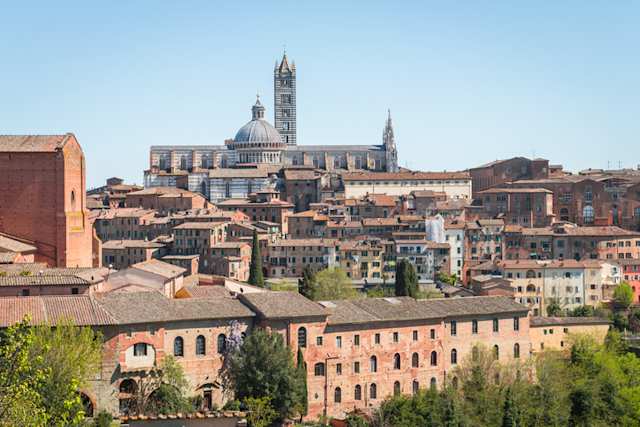
View of the Duomo di Siena over the rooftops, Tuscany
Any trip to Siena should start in Piazza del Campo, considered one of Europe's greatest medieval squares. It's always been a hive of activity with markets and other lively events, namely the historic Il Palio, the city's famous horse race, which happens twice a year during the summer. Be sure to visit Siena's show-stopping striped cathedral, home to the Piccolomini Library, known for its dazzling frescoes. For epic views, the Torre del Mangia is a 14th-century tower offering gorgeous vistas across the whole town. It's 200 steps up to the top, but it's worth the pain.
Pisa
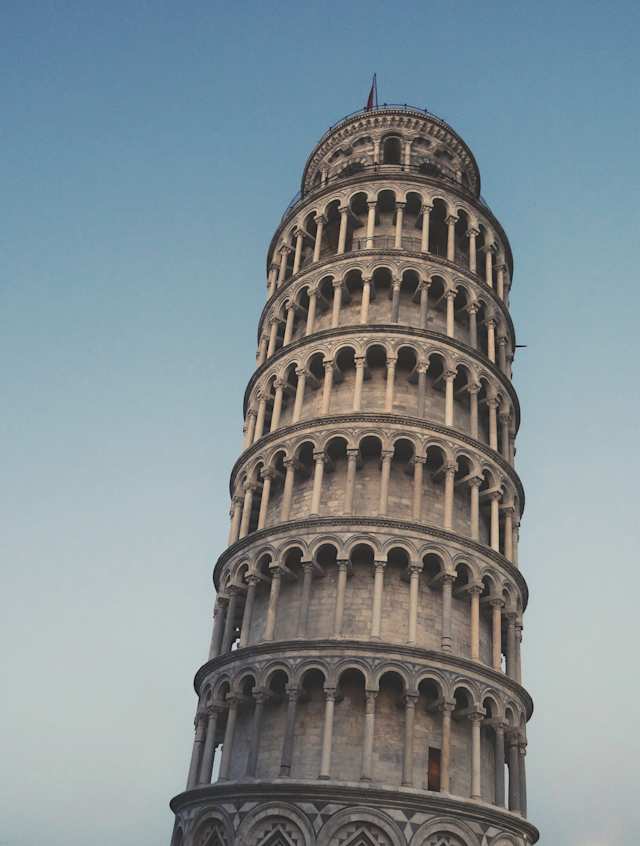
The leaning tower of Pisa, Tuscany, Italy
Home to the iconic leaning tower, travelling to Pisa is worth it for the photo opportunities alone. Those brave enough can climb the 294 steps to the tilting top for panoramic views over the city and surrounding countryside. Explore the historical complex of Campo dei Miracoli, with the Pisa Duomo and Baptistery being some of the finest examples of Romanesque architecture in Italy. Pisa is a short drive from the coast, so while you're here, take a detour to the resort towns of Tirrenia and Marina di Pisa where you can swim, sunbathe and play watersports.
Montepulciano
This medieval hilltop town boasts some of Tuscany's most beautiful countryside views. Stroll through Montepulciano's elegant historic centre, heading uphill towards the summit and Piazza Grande for awe-inspiring panoramas. It's like stepping back in time, the town dotted with Renaissance palazzos, artisan workshops and ornate churches. The town and its surrounding area are considered one of the finest winemaking regions in the world, so don't miss out on a tasting—we highly recommend Boscarelli and De' Ricci wineries.
Eating out in Tuscany
With all that exploring, you're sure to work up an appetite. Each region in Italy is home to its own style of cuisine, and Tuscany is where it gets fascinating. As a largely farming region, many Tuscan dishes are inspired by la cucina povera, the so-called 'kitchen of the poor' which focuses on simple and rustic flavours. Tuscan cooking is all about preserving the quality of the ingredient by doing as little as possible to them.
Local delicacies

Bowl with vegan Italian panzanella salad, a favourite in Tuscany
Discover local delicacies like panzanella (bread salad with tomatoes, onion, basil, olive oil and vinegar), crostini toscani (chicken liver pate on a thin slice of toast), bistecca alla Fiorentina (Florentine steak) and pappardelle al cinghiale (pappardelle pasta paired with a wild boar ragu). And that's before you get to the desserts—end on a sweet note with bomboloni (doughnuts stuffed with custard cream), castagnaccio (chestnut flour cake) and ricciarelli (soft almond biscuits from Siena).
Where to find food
To get a feel for the cuisine, a good place to start is by sampling the region's street food. Florence's street food, in particular, is not for the faint-hearted, and you'll find offal featured in many dishes such as lampredotto (the fourth stomach of the cow), which is served with broth-soaked bread with salsa verde. Most Tuscan cities and towns are home to traditional markets on different days of the week, so you could travel around without missing any of them. For larger meals, pop into a trattoria for simple home cooking or a ristorante for a more upscale meal.

